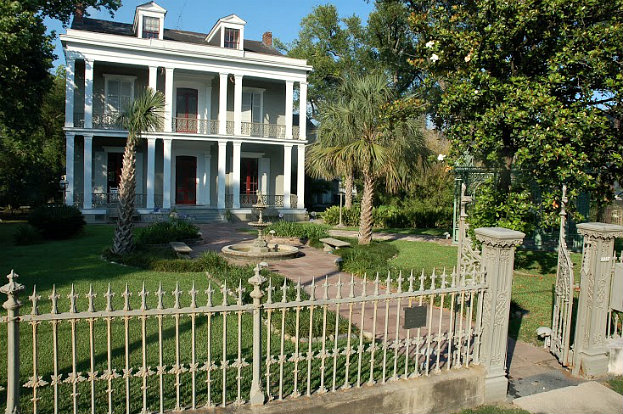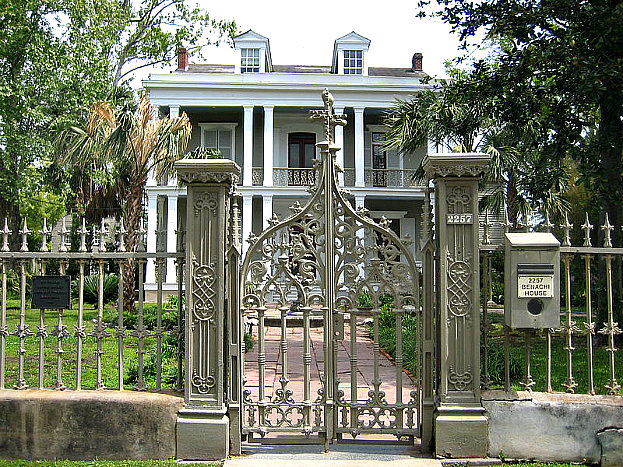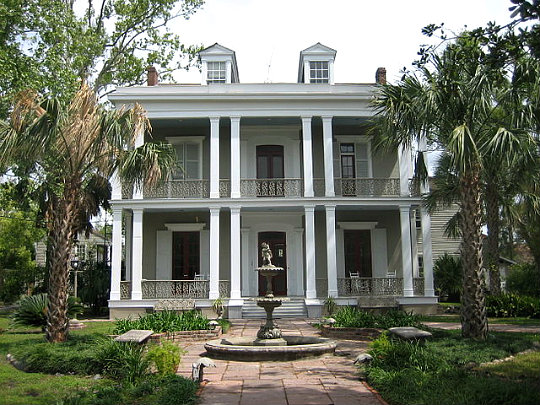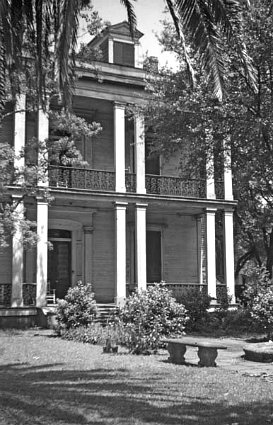



| Mr. Benachi's Legacy |
| In a city where it sometimes seems there are historic buildings on every street corner, it would be hard to pin down New Orleans' most historic location. But, Bayou Road, which runs parallel to Bayou St. John, would have to be a strong contender. |
| Brothers, Peter and Joseph Torre, purchased the Benachi house in 1886. They were shippers/mporters (the first to import lemons to the United States). The house remained in the ownership of Peter Torre's descendants until 1981. |
| When Bienville reached Lake Pontchartrain's entrance to Bayou St. John in 1699 and made his way to the Mississippi River, where he established the city, he was using a portage trail that had been in use by Native Americans for many years. |
| Construction of the first dwellings in the French Quarter began in 1718, but concessions had already been granted along Bayou St. John, between the lake and the river, starting in 1708. The houses which were built were fronted on what would become Bayou Road. |
| The property where Mr. Benachi's house now stands on Bayou Road had 8 owners prior to the time that Joseph Zeringue commissioned Barthelomy Lafon to design a home there in 1805. In 1852, several owners later, Mr. Benachi purchased the house. |
| WIth a growing family and a need for more space, the elegant home shown on this page was constructed in 1858, taking the place of the old Zeringue house. |
| Nicholas Benachi was a native of Greece and worked in the New Orleans office of a Greek cotton firm. He was, also, a real estate speculator and Consul of Greece in New Orleans. |
| Mr. Benachi's 7 children, his business career and the beautiful home he left behind (still standing after 155 years) would be legacy enough for most of us, but Mr. Benachi left his mark on the city in an even more significant way. |
| Above, the Benachi home in the 1940's. |
| It was mainly through the efforts of Mr. Benachi that the first Greek Orthodox Church in the Western Hemisphere was established. Holy Trinity Greek Orthodox Church was constructed on North Dorgenois Street in 1867. In 1960, the church was elevated to Cathedral status. |
| Requiring more space for larger facilities, the congregation moved to Robert E. Lee Boulevard, where the Hellenic Cultural Center was completed in 1980 and the new Cathedral in 1985. |
| Photo Credits: Benachi House and Gardens Infrogmation@Wikimedia.Commons |
| In 1982, James and Robin Derbes purchased the home. Their meticulous house and garden restoration project took seven years to complete, including the acquisition of mid-nineteenth century fixtures and furnishings. |
| The home serves as a premiere wedding and party location and claims to be "New Orleans' most romantic venue." I wouldn't argue with that one bit. I'm sure Mr. Benachi would be proud. -- Nancy |
| The link to this page is: http://old-new-orleans.com/NO_Benachi.html First Greek Orthodox Church in the Western Hemisphere Back to Old New Orleans Whispers - Home |